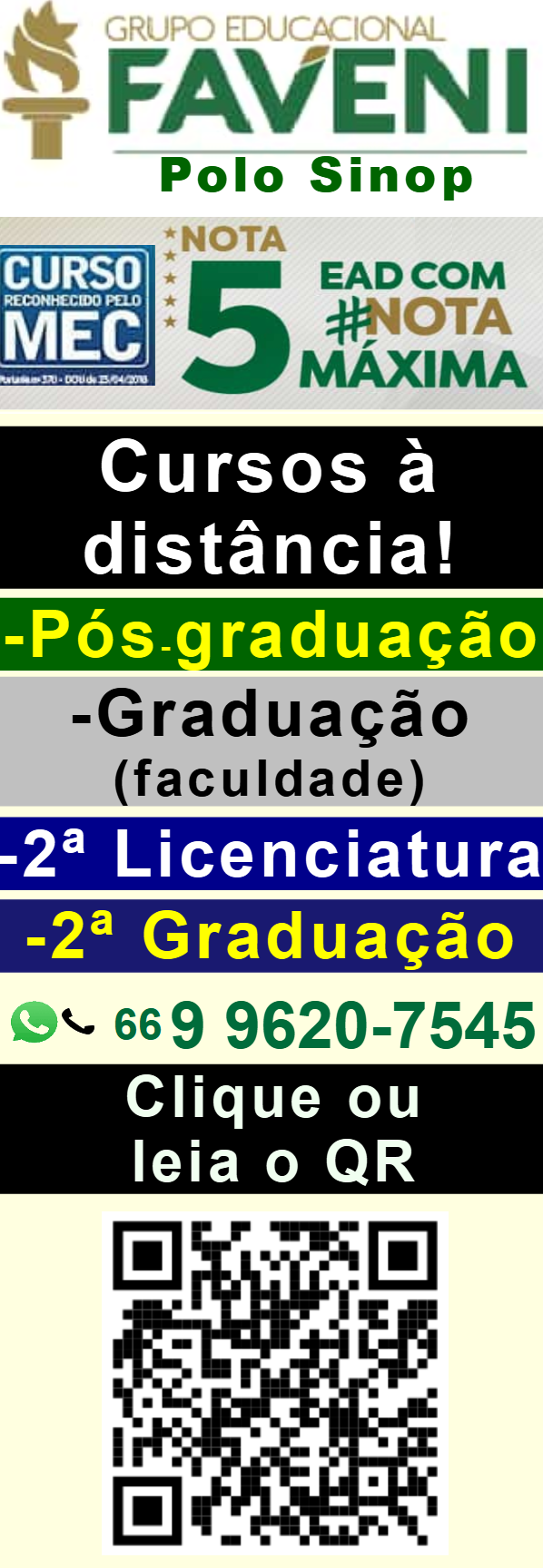DIAGNÓSTICO DA INCLUSÃO DO DEFICIENTE VISUAL NO ENSINO REGULAR, SEGUNDO A OPINIÃO DOS PROFESSORES DO ENSINO MÉDIO DA ESCOLA ESTADUAL JAYME VERÍSSIMO DE CAMPOS JÚNIOR, EM ALTA FLORESTA-MT, NO ANO DE 2018
Marlene Avancini1
Edinalva dos Santos Avancini2
Eliane Borges Ferreira³
RESUMO
Umavezque a educação inclusiva desafia a escola e seus educadores, a identificar e buscar respostas educacionais à dificuldades apresentadas por seus alunos, faz-se indispensável possibilitar aos educadores e gestores a construção de conhecimentos, pois diante de tantas e diferentes necessidades, a escola deve ser adaptativa, capaz de conviver, aprender e ensinarcoma “diferença”. Dentro deste contexto, objetivou-se verificar as principais dificuldades encontradas pelos educadores para trabalharcomalunos que possuem deficiência visual.Foiutilizado o método indutivo e na coleta de dados a técnica de observação direta extensiva, através de questionários. Ao finaldapesquisa pode-se verificar que a maior dificuldade dos educadores para trabalharcom osalunos deficientes visuais é a falta de capacitação dos professores. Verificou-se também que o professor utiliza a mesma metodologia para todos os alunos em sala de aula semteruma diferenciaçãoparao alunocomdeficiência visual. Constatou-se que o espaço físico da escola não está adaptado para a acessibilidade dos alunos deficientes visuais e queosprofessores não estão capacitados para atenderosalunos deficientes visuais. Assim, percebe-se que a inclusão educacional só poderá existir plenamente, quando se reconhecerem a diversidade que a constitui, respeitar essa diversidade e se ajustar, transformando-se e providenciando todosostipos de suporte de acordo as necessidades doaluno.
Palavras-chave:Deficiente Visual. Inclusão. Diversidade.
ABSTRACT
Since inclusive education challenges the school and its educators, identify and seek educational responses to the difficulties presented by their students, it is essential to enable educatorsandmanagers to build knowledge, because in the face of so many different needs, the school Mustbeadaptive, able to live, learn and teachwith"difference." Within this context, the objective was to verify the main difficulties encountered by educatorstowork with students who are visually impaired. It was used the inductive method and in the data collection the technique of extensive direct observation, through questionnaires. At the endofthe research it canbeverified that the greatest difficulty oftheeducators to work with the visually impaired students is the lackofqualification of the teachers.Itwas also verified that the teacher uses the same methodology for all students in the classroom without having a differentiationforthe student with visual impairment. It was found that the physical space of the school is not adaptedforthe accessibilityofthe visually impaired students and that the teachers are not able to attend the visually impaired students. Thus, it canbeseen that educational inclusion can only exist fully, when it recognizes the diversity that constitutes it, respect this diversity and adjust, transforming and providing all kindsofsupport according to the needsofthestudent.
Keywords:Visual deficiency. Inclusion. Diversity.
INTRODUÇÃO
1Graduada em pedagogia pela UniflorFaculdade de Educação de AltaFloresta
2Graduada em pedagogia pela UniflorFaculdade de Educação de AltaFloresta



